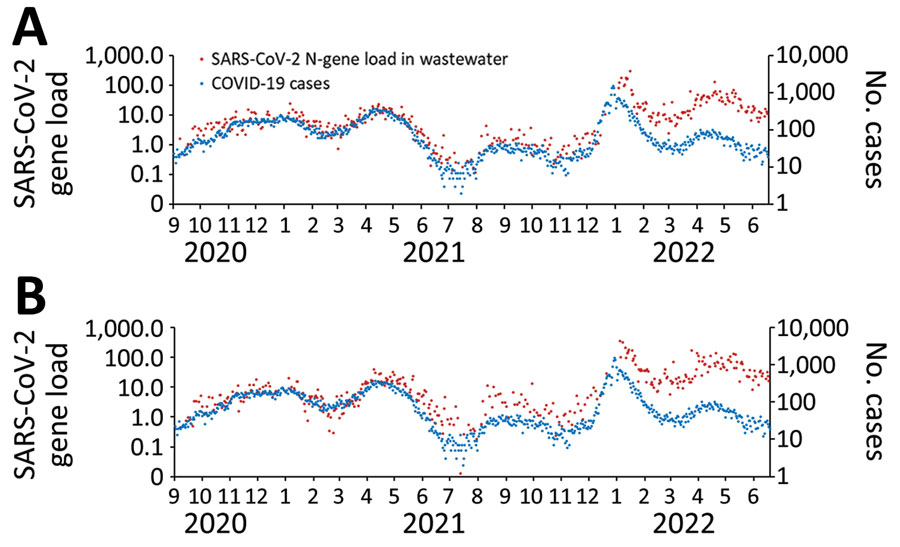Volume 29, Number 8—August 2023
Research
Omicron COVID-19 Case Estimates Based on Previous SARS-CoV-2 Wastewater Load, Regional Municipality of Peel, Ontario, Canada
Figure 1

Figure 1. Mean SARS-CoV-2 N-gene load (1012 copies/d) in untreated wastewater at Clarkson Wastewater Treatment Plant and reported COVID-19 case-patients residing in the Clarkson sewershed, Regional Municipality of Peel, Ontario, Canada, September 1, 2020–June 18, 2022. A) Nonnormalized; B) pepper mild mottle virus normalized. Data are plotted on the logarithmic scale.
1These first authors contributed equally to this article.
Page created: June 22, 2023
Page updated: July 19, 2023
Page reviewed: July 19, 2023
The conclusions, findings, and opinions expressed by authors contributing to this journal do not necessarily reflect the official position of the U.S. Department of Health and Human Services, the Public Health Service, the Centers for Disease Control and Prevention, or the authors' affiliated institutions. Use of trade names is for identification only and does not imply endorsement by any of the groups named above.